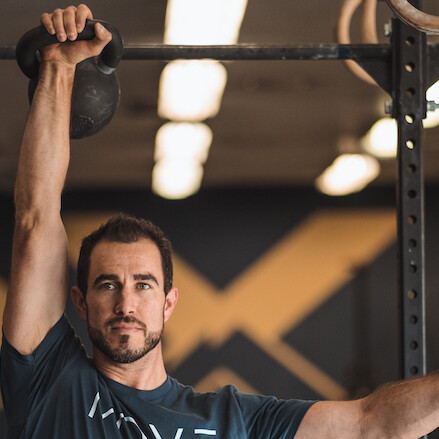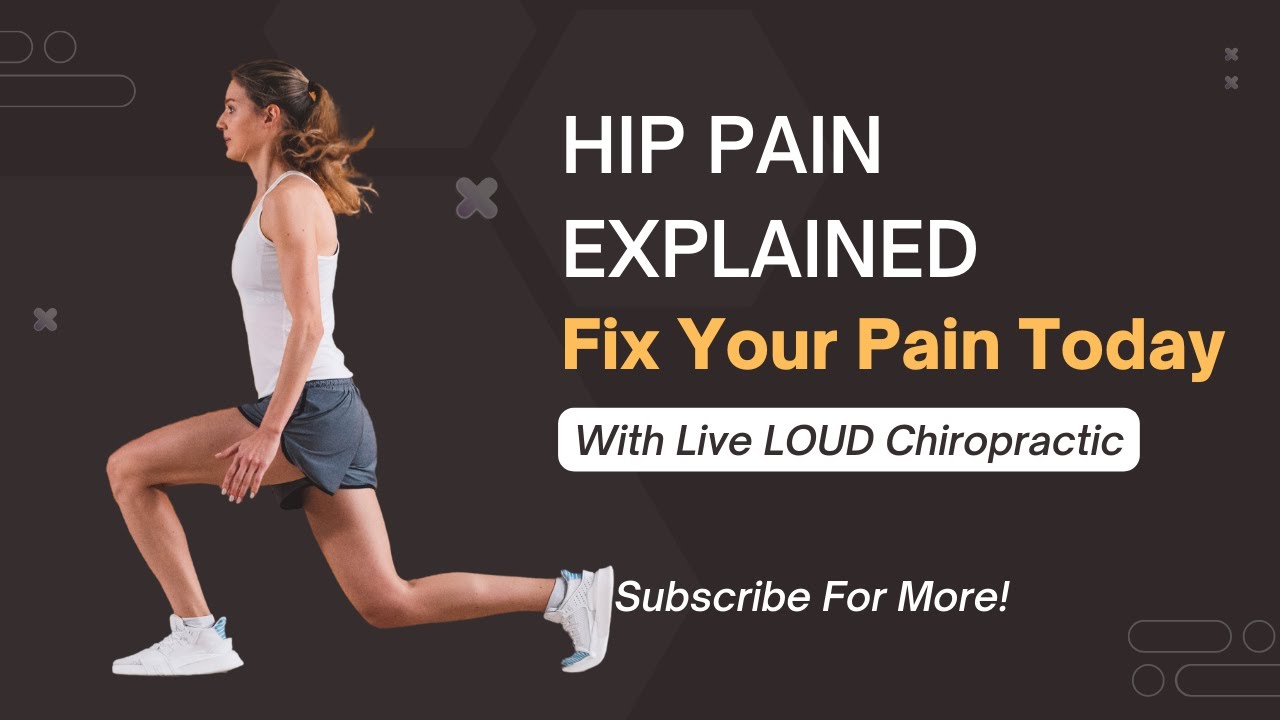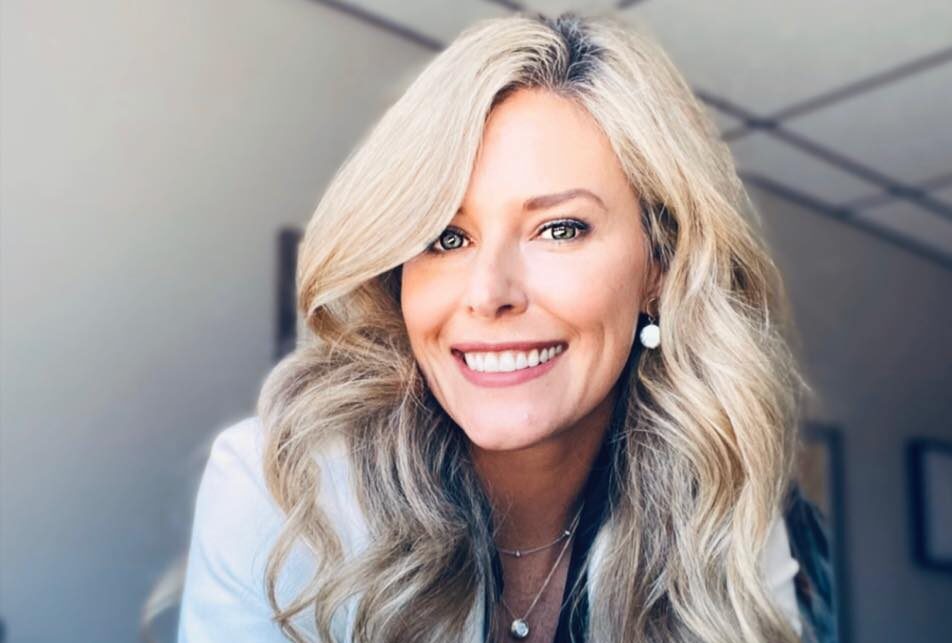Live LOUD Life PodcastLafayette Colorado
Episode 69
Over Correcting & Cueing Exercises
With Dr. Antonio Gurule
Trying to heal a tweak or injury? Dr. Antonio speaks about over correcting, muscle activation, movement patterns in this week’s episode of the Live Loud Life Podcast.
Episode Highlights
3:00 – Example of tennis playing patient overcorrecting back movements
7:00 – Reestablishing a better movement pattern
8:30 – Importance of filming your movements – Getting a coach’s eye
13:00 – Activation of muscles
18:00 – Muscle isolation
About Dr. Antonio Gurule

Background:
- Father
- Doctor of Chiropractic
- Owner of Live LOUD
- Personal Trainer & Health Coach
Check Out Some of Our Other Blog Posts and Podcast Episodes
Anthony Gurule 00:00
Hey what’s up guys, welcome back to another episode of the Live Loud Life podcast. My name is Dr. Antonio, your host of the Live Loud Life podcast, I co-own Live Loud Chiropractic and Coaching with my wife, Dr. Nichelle, here in Lafayette, Colorado. We’ve been here for a number of years now. And our big focus and goal is to help guide you to the adventurous life that you are meant for, we believe families deserve more from their health care providers. And if we can create stronger families, we can create a stronger community at home. And that’s what we’re here hopefully, hopefully helping you to do. We see and help from a number of different issues, and ages from, you know, newborns all the way up to grandparents and older populations that are trying to get stronger, that are trying to move better, that are trying to deal with maybe some arthritic pain, so on and so forth. So if you’re wanting to move better, feel stronger, and decrease your pain, hopefully, we can help you do that.
Anthony Gurule 01:09
Now, that being said, today, what we’re going to talk about. we this is a spin off of one of the previous episodes, which I think will air a week or two before this. But this was a direct reflection as to a patient interaction that I just had. So you know, we’re, we’re having this conversation. And I was like, we got to talk about this, I gotta put something down about this. And this goes along with the corrective exercises and the accessory exercises that we talked about, like, as I mentioned in that previous episode, which is good, right? There’s good. There’s benefit, especially when you’re injured, or dealing with something to be able to isolate and work on some of our weaknesses and imbalances.
Anthony Gurule 01:53
Now, what we’re going to talk about today, though, is the analysis by paralysis of over calculating, and over emphasizing certain nuances about these exercises, and that getting you wrapped up and hung up without progressing. And, in particular, and I do this to some degree, so I’m going to give you kind of like both sides. And again, what the answer always comes down to is context, finding the right thing, for the right person, at the right time. And oftentimes, I’ll make an, you know, a clinical assess or a clinical judgment. And I’ll and I’ll suggest something and we’ll you know, you got it, see how it works, right, you gotta, you gotta actually do and see how it plays out. And sometimes I’m wrong. And, you know, other times, we just, hey, we’re like, hey, we were we were right there, we just need to, we just need to step to the side a little bit and do it this way, or something like that. As Charlie Ryan Groff calls it a lateralization, right, sometimes you just gotta move to the side. So we’re doing we’re on the right path, we’re on the right track, we just need to step sidestep and do it this way for a little bit, and then we can keep kind of going forward. And so this particular individual– racquet player, right, tennis, pickleball, you know, those types of things, and was dealing with some hip issues, which is not uncommon for those types of sports, because there’s so much decelaration in loading and rebounding that is very challenging on the hips. And that as a side note is something for because pickleball seems to be a very popular sport in kind of like my parents age, not that it is only for that but if you don’t have the conditioning to be able to do that last description of deceleration and rebounding so on so forth, it can it can be it could be potentially problematic.
Anthony Gurule 03:49
But anyway, so hips up, but then was also dealing with some flexion intolerant low back kind of like, you know, the classic stuff that we always see that usually is a result of kind of getting hung up on something doing too much too soon, too fast, so on and so forth. Nothing Nothing sinister by any means. But yet flexion being oftentimes demonized of hey, don’t flex when you’re doing something, was the was the over calculation or analysis paralysis that he was getting hung up on. And again, so here’s the other side, I do recommend not flexing the lower back for many patients. But normally this is when I’m seeing someone that is very acute, and flexion is something that really sets them off. So it’s one of those things like hey, affliction sets you off. Wouldn’t it be prudent and just not flex for a little bit so that we can down regulate and desensitize everything in in having the conversation about we will at some point and we need to flex is fine. But if you’re going to pick up your kid or unload the dishwasher or something like that, it might feel a little bit better if you hinge more or squat more and so that it’s more in the hips and the knees and the legs.
Anthony Gurule 05:05
But for this individual, I’m trying to just reestablish like new hinging patterns. The over calculation on what should be happening was getting them hung up. And he was overcorrecting. So he was feeling, he’s like when I’m just basic hip hinging, basic hip hinging, Good morning type of movement, it was eliciting back pain for him, and we’re watching it. And I was like, I really don’t quite understand what’s causing pain here. Because the typical flexion intolerant and pain stuff that he was describing, he was not flexing at all. And in turn, he was actually hyper extending. So as he was going through the motion, as he was hinging, he was being so cautious about not rounding or slumping his lower back that he was just overarching. So that was actually in turn trading a lot of compressive forces on the lower back.
Anthony Gurule 06:00
But also those muscles were just like, locked in. And that was more of the pain that he was experiencing, it’s just those muscle contractions were just so intense and locked in, that was actually eliciting his pain. And so ultimately, this came down to is just like he was kind of, you know, he was getting some of this, some of these exercises from a PT and was just looking for a different perspective, maybe a little bit of more manual adjustments and things like that, interestingly enough, we haven’t really done much of that, because we sidetracked to the movement issues, if you want to call it. and what we started peeling off is, you know, I understand we’re worried about flexion.
Anthony Gurule 06:46
But this is no longer an acute or subacute thing. And when you’re talking about chronic flexion, intolerant, lower back pain, like you got to start flexing and not being worried about that micro loading.
Anthony Gurule 06:58
But what we wanted to do is still establish the movement pattern. So we changed, we changed the description, or we changed the goal, better yet.
Anthony Gurule 07:08
The goal previously was don’t round your back. And so when he heard that, I was like, Okay, well, if I don’t, if I don’t want to round my back, I might as well just hyperextend and go the opposite way.
Anthony Gurule 07:17
And that was creating a lot of, again, compressive force and low back and a ton of muscle tension that was then eliciting pain because the muscles were just just rockhard locked in. And so well how do we get him to hinge then and squat and move without the overcorrection of hyperextension?
Anthony Gurule 07:34
Well, we had to change the description of what I wanted him to actually do, accomplish, and or in this case, feel. Because the question commonly is when they get home, even if you send a video or description is like,
Anthony Gurule 07:46
Well, how do I know if I’m doing it Right? Well, how does it feel? Right?
Anthony Gurule 07:50
Are you are you able to initiate the feeling that we’re going for? And what I always suggest, which is for any of you out here, learning a new movement or anything like that, is you do two things, you do the movement and you internalize the feeling right? What areas of my body are working?
Anthony Gurule 08:09
Do I feel balanced? Do I feel in control. You know, if you’re working with a great practitioner, they’re going to kind of help you with these things. But don’t chase activation, this is the second part of this that we’re going to talk about in a moment here. Don’t always choose activation.
Anthony Gurule 08:28
But then what I want you to do is I want you to film yourself, set your phone up, film yourself doing it. So you have now this external frame of reference, you have the Coach’s Eye.
Anthony Gurule 08:38
So you can then immediately look at the film or the video, replay it and look and say okay, well, this is how it felt. And this is how it looked. Right.
Anthony Gurule 08:51
So now you have this other piece of information that is very vital to you putting those two pieces together and formulating the best new movement pattern that you can. And that is a fantastic way of learning newer movements and practicing things to get to accelerate that process if you will.
Anthony Gurule 09:12
Now, the so the, so sorry, we’re gonna get to the activation. So what we were focusing on is, okay when we want a hinge, right, so how can I help you hinge better?
Anthony Gurule 09:24
and start to look at what we want for the hinge. And so we talked about balance. All we said was, we talked about the foot tripod, ball of your foot, the big toe ball, the foot outside ball, the foot and then the heel, right? It’s kind of like a tripod.
Anthony Gurule 09:41
As you’re going through this hip hinging pattern or good morning or what would be like a bodyweight deadlift, I want you to just to first and foremost, first five reps, is think about how your feet feel, right? Do you feel balanced? Are you too far on your toes? Are you too far in your heels?
Anthony Gurule 09:53
Are you collapsing side to side? Good. After about five reps, five or six reps everyone can tune in and usually find a pretty good balance point, right?
Anthony Gurule 10:03
Okay, next, we’re going to work our way up, right? What do you feel? What do you feel your hamstrings doing? Right? Okay, every time we go into a hinge, I feel my hamstrings kind of stretch like a rubber band a little bit.
Anthony Gurule 10:12
It’s not intense, but I feel I feel that backside of my body kind of stretching and loading, if you will. And then, you know, this would be these are just examples I’m giving for this individual person, you know, if someone’s dealing with knee pain or something like that, we would say, Hey, do you feel how that pressure gets taken off of your knees, or increases on your knees as we’re going back and forth?
Anthony Gurule 10:32
these are all of these things that are super helpful. And by cueing certain feelings that in turn then can help the individual when they’re at home, recreate the movement pattern that we’re looking for, especially when you’re trying to manage and monitor pain, but also trying to enhance a certain area.
Anthony Gurule 10:52
And this is where the kind of activation model if you will, comes in. so we’re working up, and then I had him say, you know, he’s so worried about his back. I’m like, Okay, well, do you feel your back working? And he’s like, yeah, it’s it’s really intense, like the muscles are, like, really rock hard to track.
Anthony Gurule 11:07
And like, well, they should be. If we’re trying to maintain relatively neutral spine and send to our hips, your lower back muscles should engage, because they’re preventing you from rounding. But that’s the difference of over contraction, and overarching, so then I’ll encourage him to do one rep, or you’re arching your back. And he’s like, Oh, that’s way more intense, okay, well then do it the other way.
Anthony Gurule 11:27
Okay, that’s a little bit more balanced. So now you really set the frame of reference of what like an over arching or over contraction movement looks like. So it’s kind of like, the good and the bad right away. And they can start to again, blend the pieces together and put everything together to have a better understanding about what movement we’re actually trying to look for.
Anthony Gurule 11:48
Now, then, and oftentimes too adding weight to some capacity can really help enhance this right, when you add a little bit of weight, you can enhance balance, you can enhance certain areas that you want to load more or increase to help them elicit that feeling to so there is benefit to adding weights.
Anthony Gurule 12:09
And this was part of our conversation, because his previous PT said, I only want you to do bodyweight, until you master how to do this, there’s no there’s no reason to add weight. I don’t buy that. I don’t think that’s good.
Anthony Gurule 12:21
I think there’s plenty of times and places in which adding weight can actually be performance enhancing for the thing that we’re actually trying to accomplish. So don’t get too hung up on not being able to add any sort of weight until you understand how to do bodyweight exercises.
Anthony Gurule 12:39
Now, the activation, this is the second part of this, the activation, he was so hung up on like, Well, I’m not activating the areas that I need to be activating. And while I talk about activations and you know, having to entice dormancy out of certain areas.
Anthony Gurule 13:02
First and foremost, what you need to understand about activation is if you’re moving through the motion, somewhat, credibly, if you will, then more than likely you’re activating right so for instance, he was talking about a glute exercise, this is your kind of classic Jane Fonda, you’re laying on your side and your your abducting are lifting one hip up towards the ceiling.
Anthony Gurule 13:28
He’s like, Well, I just don’t feel like my, there’s one side of my hip that’s activating, but the other side isn’t activating. And I was like, well, is your leg moving?
Anthony Gurule 13:36
And he’s like, Yeah, Mike, well, then it’s activating the muscles that you’re trying to, quote unquote, target or activate.
Anthony Gurule 13:42
If they’re not, if the leg is not moving, then you are not activating. If you are moving, then you are activating. So don’t get hung up on feeling like you have to have this burn or this intense feeling to quote unquote, activate a certain area.
Anthony Gurule 13:57
Now, we might want to draw attention to certain areas, because we know that they can be beneficial from a stability or force generating standpoint. 100% there’s validity to that. But what we want to encourage is like Don’t get over calculated by trying to be precise about activations in certain areas that need to be squeezed more or engage more or not,
Anthony Gurule 14:26
because that was getting him again, too hung up on the precision of doing something perfectly before he can do anything else. And then in doing so, that overcorrection or precision was was limiting his box so that anytime he was outside of that box, it was pain or it was bad or it was you know, I need to go back.
Anthony Gurule 14:46
And so what we try to do is just get more into a movement flow state is just like hey, let’s throw out activations, calculations, over corrections, and I just want you to get more into what you are familiar with which is sport. play tennis a lot and pickleball.
Anthony Gurule 15:05
So it’s like, when you’re outside of, you know, maybe having some precision with the flick of your wrist or how you’re hitting and aiming, there’s precision in that calculation. But when you’re talking about drop steps and chasing the ball and deceleration, you’re not going to be as calculated on that.
Anthony Gurule 15:22
Now, many people will argue with this, and I do agree with their counter argument to this is, it’s one we’re talking about this is you’ve done it so much when you’re an athlete, that that calculation is running second nature, right?
Anthony Gurule 15:37
So yes, there is some benefits are practicing this from a calculated perspective. That’s why there’s cone drills and different things like this, where you’re running and then you see a target and you need to decelerate and turn, to calculate how to reach a ball and trajectory yet, there’s calculation right, but what we’re saying in this point in time, he is over calculated, he is over analytical, and I want him to just start getting back to play.
Anthony Gurule 16:02
So we were just doing some basic cosec, side lunges, side shuffles, drop step type of things, to encourage the same hip hinging patterns that we were doing, but more in real life movement, so that he cannot over calculate himself into this box of limitations, if you will.
Anthony Gurule 16:19
And we didn’t even talk about activation, don’t even worry about activating, all I want you to do is touch target, come back, touch target, come back, run forward, touch back, hinge here, touch back, lunge to the side, touch your inner knee, come back up, lunge to the other side, touch your inner knee, come back up.
Anthony Gurule 16:35
So he was able to accomplish everything that we wanted to do with minimal pain and discomfort, because we took out the over calculation and the activations. Okay. So I think that’s an important component, because too often we get wrapped up into the rehab purgatory as Dr. Craig Liebenson uses.
Anthony Gurule 16:53
And in, we get stuck there, because we’re worried about calculation and precision, and you need to be able to do this before this and this. Sometimes it’s beneficial to just run ahead a little bit, test the water, see what happens, create some encouragement, create some confidence, and then we can, you know, come back and re layer and back and forth.
Anthony Gurule 17:11
But that’s part of what the game is, is it’s just this constant back and forth of trying to find the right thing to help move the needle forward without going too much, create an injury, but then also not like having something that’s weighing you down constantly.
Anthony Gurule 17:25
So that was just, you know, what I thought to be a very critical sidebar in conversation that we had in his his rehab process. This is only our third time seeing.
Anthony Gurule 17:37
So a lot of this conversation groundwork has to be done early on, so that we’re not scrambling and playing this kind of like pickup game later on. But too many people that are just okay, we see an issue. Here’s the protocol or the program that works for most people, and you just need to do it right.
Anthony Gurule 17:54
If you’re not seeing results, you’re not either activating the right things correctly, or you’re not doing it enough, or you’re not doing it well enough. Well enough. And so, you know, they they almost feel guilty about their own progress, not happening because they can’t seem to activate and get things going. Right.
Anthony Gurule 18:18
Where in my mind, it’s not there’s not enough of a goal, or there’s not enough enticement for the body to even want to do the thing. Because we’re not challenging it, there’s no novelty, that would elicit an activation pattern that we would even want and the isolated principle, while good from maybe a post surgical and very acute setting, It’s not as beneficial when you’re trying to get back to a sport. isolation is still fine, right?
Anthony Gurule 18:48
When often we see isolation oftentimes with bodybuilding and you can still even isolate as a corrective or an accessory as we were talking about, if you need something to kind of pick up then it’s slightly deficient compared to everything else. 100%. But that cannot be the foundation of a rehab approach.
Anthony Gurule 19:06
And one last note, before we wrap up here I want to talk about for the activations is understanding like, what, what we really even mean by activation, right? Activation again means the muscle is activated or contracting.
Anthony Gurule 19:22
Thus, in turn, moving the body part. As we already said, I don’t think I don’t think this is activating, okay, well, like do the movement. okay, your leg moves to the muscle has to be activated otherwise, you will not have been able to complete the movement. Fair enough, right?
Anthony Gurule 19:38
But when you’re looking at discrepancies, he was basically like, well, this side is burning all the time. So it must be over activated and the other side is not burning, so it must be under activated. And in my opinion, at least in this situation.
Anthony Gurule 19:56
The reverse is actually true. The burning side is the difficient side. the burning side is the side that is getting overworked from these basic leg lift exercises, that that means it is it doesn’t have the capacity or the endurance to do all the reps.
Anthony Gurule 20:13
So it’s overworked. It’s not that it’s not activated, it actually is activated, it’s just not strong enough. However you want to say it, to be able to do all that in that in turn while it’s burning, and then the other side, that’s fine, that side is fine.
Anthony Gurule 20:28
So I would actually say, the side that’s burning more, needs a little bit more time and attention. And that’s sometime is the downside of these isolated exercises is you’re doing something that’s too isolated for the muscle’s ability, whereas when you’re doing these side lunges, I’m still working the same hip components, it’s just not isolated.
Anthony Gurule 20:48
So I have the surrounding help of all the other muscles, connective tissue, so on and so forth, to help build the strength along with it. So that’s kind of a just additional side thing we should be considering when we’re talking about activations.
Anthony Gurule 21:01
So to recap, what we need to understand is sometimes being too precise, being too calculated being too focused on certain individual regions and body parts and or movements before you can do more, could actually be detrimental to the overall progress of what you’re trying to accomplish. Right, we have to keep the goal in mind.
Anthony Gurule 21:27
While it might not begood to say, Hey, if you want to end up playing tennis, let’s just start playing tennis and kind of just like, you know, tinker around as we go. No, that’s that’s going from zero to 100.
Anthony Gurule 21:39
Right, we need to build more stepping stones. But at the same time, if you want to get back to tennis, and yet you’re just doing clam shells, or isolated hip exercises, because your hips hurt at some point in time. Or you need to learn how to hinge because that’s really important for hips and lower back.
Anthony Gurule 21:56
That’s going to be a very, very long road to recovery. Now, again, because there will be someone who says it well, what about this, this, and this? Yes, context, it might be important at the same time, but as we were saying, you cannot depend on that from a long term perspective.
Anthony Gurule 22:13
And you have to be able to integrate that into the whole thing. And if it’s in in making sure that it’s not slowing down, or holding back at the progress of your patient or client.
Anthony Gurule 22:24
So keep moving, hips are important, I ain’t gonna lie, spine neutrality, hip hinging, important to a certain degree of context, it’s okay to flex the spine. If it hurt in the past, flexing forward is okay. And actually doing it more could encourage more spinal flexion and familiarity with flexion and create some resiliency and comfort and flexion.
Anthony Gurule 22:47
But if you’re going out in gardening for two hours, it might be prudent to hinge a little bit more so that it’s not on your lower back. You see what we’re getting at here. Explore, understand your body, start getting to a movement in a flow state and understanding that we’re looking for balance and feeling to elicit–so sorry–to complete the task at hand, change the task, make it more complex, add something novel, right. all of these things are going to help you understand your body better, how to move better, how to encourage more movement and ultimately, feel better, feel stronger, and move better. Thanks for tuning in, guys. Live loud.
–




